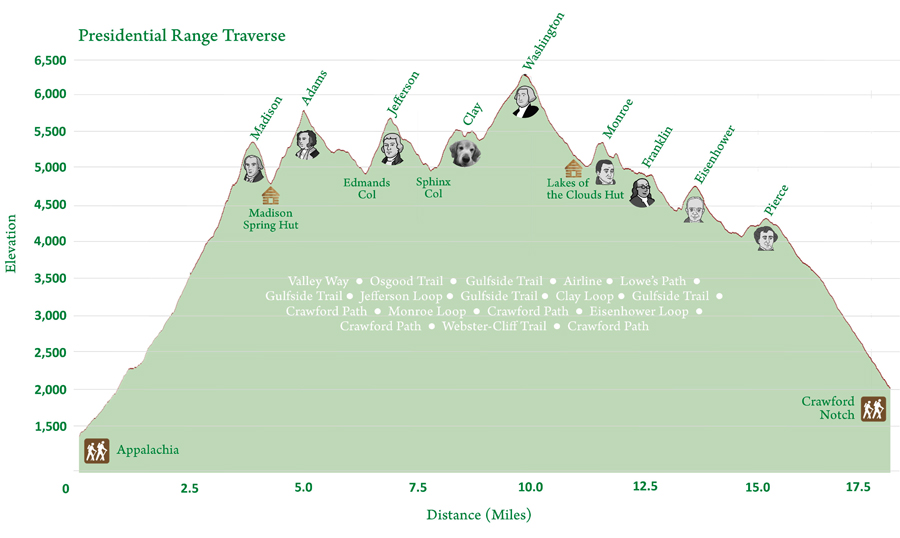My friend June decided to go with me on a backpacking trip to the presidential traverse last summer. We didn’t have an early start and we got lucky we were able to ride the bus to take us to the trail head. We got there at 10am and we started hiking until 10pm all the way to the Lakes of the Clouds Hut, a shelter few miles away from Mount Washington. We were lucky the warden was kind enough to let us in the hut, because the wind picked up overnight.
Just to give you a background about the hike, the Presidential Traverse is a strenuous and sometimes dangerous trek over the Presidential Range of New Hampshire’s White Mountains. The Presidential Range is a string of summits in excess of 4,000 feet (1,200 m) located in the White Mountain National Forest all named after previous U.S. presidents. To complete the traverse, you must begin at either the northern or southern terminus of the Presidential Range and finish at the opposing end. The journey begins at the northern end at Mount Madison followed by Mount Adams, Mount Jefferson, Mount Washington, Mount Monroe, Mount Eisenhower and finally Mount Pierce.
The basic Presidential Traverse begins from a trail head on U.S. Route 2 or at the Dolly Copp Campground at the northern end of the Presidentials, crosses the great ridge of the range and ends in Crawford Notch at its southern terminus, or vice versa. The Presidential traverse is around 23 miles (37 km), with 9,000 feet (2,700 m) of elevation gain. The total distance could be shortened to 19.2 miles (30.9 km) by only taking standard through trails without summiting all the peaks.
By definition, a “presidential” traverse requires a hiker to cross over the summits of peaks named after U.S. presidents. Listed from north to south, they are:
Mount Madison – named after James Madison
Mount Adams – named after John Adams
Mount Jefferson – named after Thomas Jefferson
Mount Washington – named after George Washington
Mount Monroe – named after James Monroe
Mount Eisenhower – named after Dwight Eisenhower
Mount Pierce – named after Franklin Pierce
